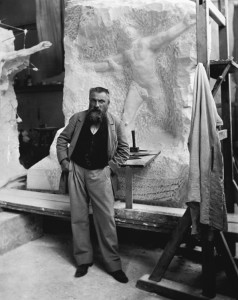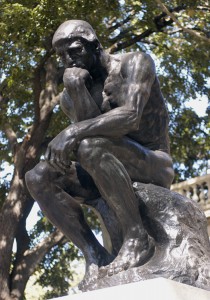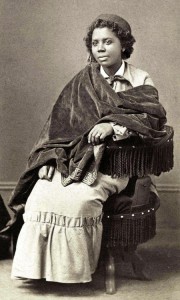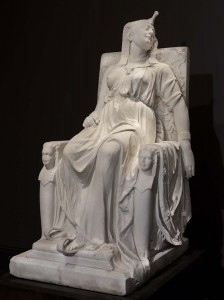Native American Heritage Month: Edmonia Lewis
Monday, November 29th, 2021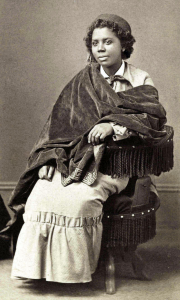
Edmonia Lewis was the first professional African American and Native American sculptor. She became an internationally acclaimed artist in the 1860′s and 1870′s. Lewis was notable for incorporating themes relating to the Black experience and Native American culture.
Smithsonian Institution
People in the United States observe Native American Heritage Month each year in November. During this period, many Native tribes celebrate their cultures, histories, and traditions. It is also a time to raise awareness of the challenges Indigenous people have faced in the past and today, along with their contributions to the United States as its first inhabitants.
Edmonia Lewis was the first professional Black American and Native American sculptor. She became an internationally acclaimed artist in the years after the American Civil War (1861-1865) and Reconstruction (1865-1877). Lewis worked in a Neoclassical style. Neoclassicists often use subjects from ancient history to make observations about contemporary events. She was notable for incorporating themes relating to the Black experience and Native American culture.
Mary Edmonia Lewis was probably born around July 4, 1844, in Greenbush (now Rensselaer), near Albany, New York, to a free Black American father and a mother who was Black American and at least part Chippewa. Mary Edmonia was orphaned when she was a child. She and her older half-brother Samuel were adopted by her mother’s sisters and raised in a nomadic Native American community on the New York-Canadian border. Mary Edmonia was given the Chippewa name Wildfire.
Samuel became a gold miner in California and financed his sister’s early schooling. In 1859, he also helped her to attend Oberlin College in Ohio. While there, she asked to be called Edmonia Lewis. At Oberlin, Lewis boarded at a minister‘s home with white female students. In 1862, she was accused of poisoning two of her housemates. Days later, she was beaten by a white mob. Although the charges against her were dropped for lack of evidence, Lewis was subjected to a highly publicized hearing. She was later accused of stealing art supplies at the college. That case was also dismissed. However, Oberlin would not allow Lewis to finish her final term and graduate.
In 1863, with Samuel’s help, Lewis traveled to Boston, Massachusetts, where she became acquainted with the abolitionist William Lloyd Garrison. She also met the sculptor Edward A. Brackett, who gave her some lessons in sculpture. Soon, she set up her own small studio. In 1864, Lewis created busts of Colonel Robert Gould Shaw, a Civil War hero who had died leading the all-Black 54th Massachusetts Regiment, and the abolitionist John Brown. With the money she earned from sales of the Shaw and Brown busts and some clay and plaster medallions she created, Lewis traveled to London, England; Paris, France; and Florence, Italy; before settling in Rome, Italy, where she continued her work as a sculptor.
One of Lewis’s most acclaimed works is Forever Free (1867). Commemorating the 1865 abolition of slavery in the United States, the sculpture depicts a Black man and woman emerging from the bonds of slavery. Lewis embraced her Native American heritage with works inspired by the American poet Henry Wadsworth Longfellow and his epic poem The Song of Hiawatha (1855), about the great Native American leader Hiawatha. These included the sculpture Old Arrow Maker (modeled in 1866, carved in 1872) and the busts Hiawatha and Minnehaha (both 1868). Lewis created an acclaimed bust of Longfellow in 1871.
Lewis also carved busts of American presidents, including Ulysses S. Grant and Abraham Lincoln, as well as sculptures of mythic, Biblical, and historical scenes. In 1876, she created a sensation at the Centennial Exhibition in Philadelphia, Pennsylvania, with The Death of Cleopatra (1876). Lewis’s 63-inch- (160-centimeter-) tall marble sculpture depicts the Egyptian queen in the throes of death.
Lewis continued to exhibit her work until the 1890′s. Little is known about her later years. Lewis is believed to have died in London on Sept. 17, 1907. A number of her sculptures are now part of the Smithsonian American Art Museum, in Washington, D.C.

